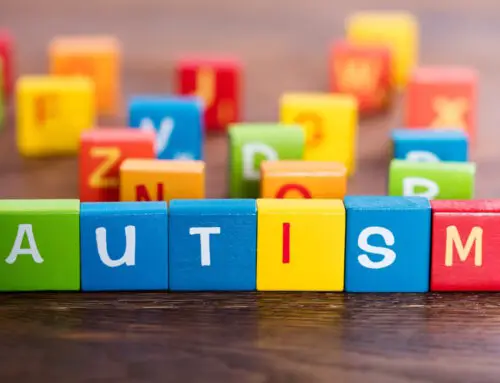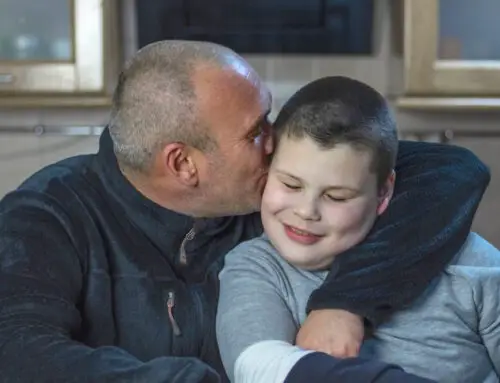Introduction
Dementia, in its various forms, poses significant challenges to patients, their families, and healthcare professionals. Having a family member or loved one receive a dementia diagnosis can be a scary prospect, but understanding the progression of the disease can help you make the best decisions for them and their comfort. Characterized by its progressive nature, dementia affects cognitive and physical functionality, impacting the daily lives of patients. Recognized as a leading cause of disability and dependence among elderly people worldwide, dementia significantly contributes to increasing global morbidity levels. This increasing rate necessitates a more profound understanding of dementia, its causes, types, and connection with mortality. The major indicators of approaching death among patients provide caregivers and families with crucial knowledge that can guide them in enhancing the care of their loved one in their last days.
Understanding Dementia
When it comes to dementia, a combination of genetic and environmental factors contribute to the development and progression of the disease. Genetic risk factors like mutations or inherited traits can significantly increase the chances of developing dementia. On the other hand, environmental factors like diet, social engagement level, and cognitive activities also play a role in disease onset.
Notably, dementia is not one specific disease. It’s an overall term that comprises conditions characterized by memory loss, language difficulties, poor problem-solving, and degeneration of other cognitive skills. These types include Alzheimer’s Disease, Vascular Dementia, Lewy Body Dementia, and Frontotemporal Dementia, each presenting their own unique symptoms and development patterns. For instance, end-stage vascular dementia often involves problems with blood supply to the brain, potentially leading to more sudden declines in cognitive and physical abilities. This stepwise decline in cognitive functions differentiates vascular dementia from the gradual deterioration seen in many other types of dementia.
What Is the Connection Between Dementia and Mortality
One of the severe impacts of dementia is its effect on life expectancy. It’s among the leading causes of death in older adults, with studies revealing that half of elderly individuals diagnosed with dementia succumb within 4.5 years. Individuals diagnosed with severe dementia face high mortality risks, especially those whose disease has progressed to the point of losing critical cognitive and physiological abilities.
Ten Indicators That Death May Be Approaching For Dementia Patients
Recognizing the signs of approaching death through advanced dementia symptoms is crucial in the management of the disease, especially in providing the best timely end-of-life care.
Increased Sleep
Patients with later-stage dementia often sleep more than usual and, conversely, spend less awake time. This sleep increase is generally due to the body’s reduced energy supply and the progressing disease’s metabolic changes. An uptick in sleep often indicates nearing death as the body starts to shut down.
Lack of Appetite
As dementia progresses, patients often lose their sense of taste and appetite. This lack of food intake can lead to weakening of the body, indicating nearing end-of-life. Caregivers should observe these changes, balancing the respect for the patient’s autonomy and the need to sustain life as comfortably as possible.
Physical Changes
Certain physical changes, like marked weight loss, decreased mobility, increased frailty, and recurrent infections, commonly occur in dementia’s final stage. These health issues compound, indicating the body’s diminishing ability to function properly and survive.
Behavioral Changes
Dementia patients may exhibit marked shifts in behavior, emotion, or cognizance, such as increased agitation, restlessness, or fear. Alterations in personality and loss of interest in favorite activities are critical indicators of deteriorating health and approaching end-of-life.
Decreased Socialization
Patients nearing death often withdraw from social interactions. Those who were once sociable may start to prefer solitude and exhibit decreased interest in communication. This decreased socialization is usually a coping mechanism to conserve energy as the body weakens and prepares for the end stage.
Changes in Breathing Patterns
Irregularities in breathing, like rapid or shallow breaths, frequent breath-holding, or “death rattle” (a rattling sound due to throat secretions) suggest an approaching end. These reflect the body’s increasing struggle with its primary functions and the progression towards the final stages of life.
Terminal Restlessness
Terminal restlessness or agitation is a common phenomenon in late-stage dementia patients. The exact cause isn’t certain, but it’s often associated with physiological changes like organ failure, reduced oxygen levels, or imbalances in the body. The absence of lucidity during these restlessness episodes signals the anticipated end.
Loss of Bodily Functions
In the final stages of life, a dementia patient will often lose control over their bladder and bowel. This loss is due to the diminished signal transmission between the brain and body, indicating the near-complete breakdown of bodily functions and approach of death.
Difficulty Swallowing
The swallowing reflex may significantly diminish in patients nearing death, leading to choking or aspiration pneumonia. The decreased ability to safely swallow food or water inherently increases the risk of mortality.
Disorientation and Confusion
Disorientation and confusion often escalate in the terminal dementia stage. Aimless movements, meaningless vocalizations, or hallucinations indicate the brain’s deteriorating functionality, marking an impending end of life.
How To Provide Comfort To Dementia Patients
Comforting dementia patients requires personalized strategies considering the unique symptoms of each patient. Warm and understanding communication, tailored activities, and familiar surroundings can help maintain a sense of tranquility and dignity for your loved one. Recognizing end-stage dementia often involves transitioning the individual to memory care facilities or hospice care to ensure they receive supervision from a qualified caregiver, specialized support, and comfort as their condition progresses. In the final stages, palliative care and hospice care play a critical role in managing symptoms, reducing suffering, and enhancing quality of life.
Conclusion
Understanding the signs of deteriorating brain health in dementia patients is crucial in providing them with timely, dignified care. As the disease progresses, focus often shifts to ensuring the dignity and quality of life of the loved one, emphasizing comfort, peace, and meaningful interaction, even as verbal communication becomes limited. These signs mirror the patient’s journey and their struggle with the debilitating effects of dementia. As we deepen our understanding, we can not only better predict the natural progression of the disease, but also foster an environment that maximizes comfort in the face of life’s final transition. This nurturing of a deeper understanding and compassionate response is the very essence of end-of-life dementia care.




